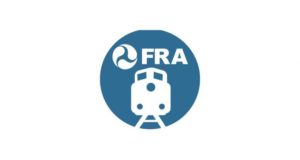RSI Quality Newsletter Feature on Blast Cleaning/Profile
Written by Jennifer McLawhorn, Managing Editor
WASHINGTON, D.C. – The Railway Supply Institute released their RSI Quality Newsletter with an article on blast cleaning/profile.
Railway Supply Institute tweeted out their QAC Newsletter earlier this week.
In it, Ken Campbell of Marmon Rail wrote a Surface Preparation – Blast Cleaning/Profile article. According to Campbell, there are two objectives when cleaning metal surfaces. The first is to “obtain a hard, continuous surface that will remain stable as a coating’s substrate” and “to provide a cleaner metallic base to which the coating material will adhere more strongly.” This is because the surface needs to be prepped properly so that the surface is “compatible” with whatever coatings the manufacturer applies.
The main concerns are the surface roughness as well as the cleanliness of the surface. “The profile increases the amount of surface to which the surface may adhere.” Campbell asserts that this preparation of the surface can be “as much as half the cost of a coating job”, and that cost is “justified by the importance of surface preparation to the long-term performance of the coating system.”
Campbell quotes Corrosion Prevention by Protective Coatings’ author Chuck Munger as stating “70% of coatings failures are caused by poor or inadequate surface preparation, and that the proper surface preparation is the best insurance against premature coating failure.”
Because of this correlation, “there is a direct relationship” between the depth of the surface profile and how thick the coating system is. Additionally, Campbell posits that there is not a universal size in terms of internal coatings as “each is developed with specific characteristics and chemical resistance principles and in many cases a particular commodity service in mind.”
In an illustration on page four, Campbell shows the abrasive size versus surface profile and details the factors that influence the depth of the surface profile. These include “abrasive hardness, abrasive shape, abrasive size, distance from nozzle to substrate, air pressure, and substrate hardness.”
Abrasives that are more coarse tend to “cause a large surface deformation called ‘hackles’ . . . [which are] often the starting point of pinpoint rusting due to the hackle tip protruding through the coating.” Because of this, it is important to understand the profile height produced from different abrasives and its relationship between thickness of coating systems.
The piece can be read in its entirety here.





